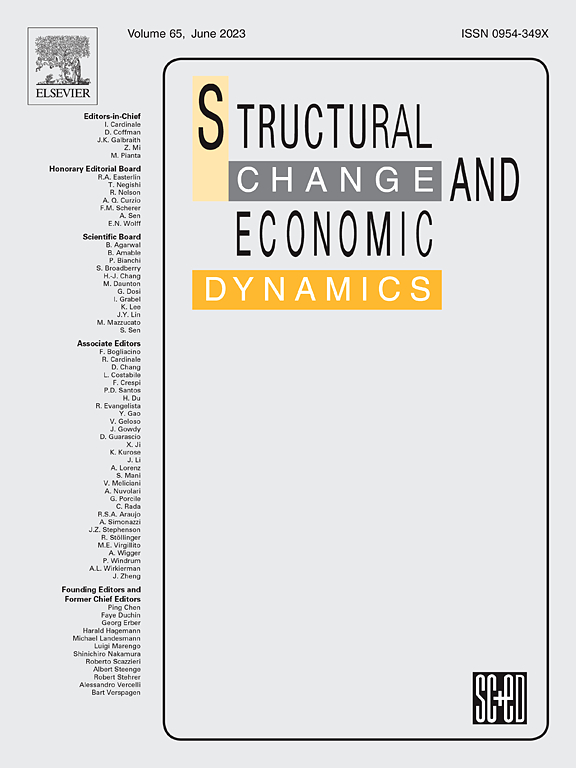Cross-border R&D, absorptive capacity and innovation performance
IF 5
2区 经济学
Q1 ECONOMICS
引用次数: 0
Abstract
In the process of innovation, the importance of utilizing external knowledge by countries has gradually been recognized. Against the backdrop of economic globalization, accessing and absorbing external knowledge through cross-border R&D has become a significant means for both countries and enterprises to enhance innovation performance. Within the increasingly frequent global network structure formed by cross-border R&D investments, national innovation performance is jointly influenced by external network relations and absorptive capacity. Combining network theory and absorptive capacity theory, this paper portrays the global cross-border R&D investment network structure, empirically examines the relationship between network position, absorptive capacity, and innovation performance using panel data consisting of 16060 cross-border R&D investment projects spanning from 2003 to 2020. The results indicate that global cross-border R&D investments have formed a complete topological network structure characterized by a core-periphery feature, indicating heterogeneous distribution of countries’ positions in the network. Countries in different positions exhibit varying impacts of cross-border R&D on innovation performance. Countries with higher node strength and richer structural holes tend to have higher innovation output. Additionally, absorptive capacity plays a positive moderating role between network position and innovation performance, although this role varies heterogeneously between developed and developing countries. This research serves as a valuable theoretical resource for guiding the design of cross-border R&D and innovation policies.
跨境研发、吸收能力与创新绩效
在创新过程中,各国逐渐认识到利用外部知识的重要性。在经济全球化背景下,通过跨境研发获取和吸收外部知识已成为国家和企业提高创新绩效的重要手段。在跨国研发投资形成的日益频繁的全球网络结构中,国家创新绩效受到外部网络关系和吸收能力的共同影响。本文结合网络理论和吸收能力理论,描绘了全球跨境研发投资网络结构,并利用2003 - 2020年16060个跨境研发投资项目的面板数据,实证检验了网络位置、吸收能力和创新绩效之间的关系。研究结果表明,全球跨境研发投资已经形成了一个完整的拓扑网络结构,具有核心-边缘特征,表明各国在网络中的位置分布不均。处于不同位置的国家对创新绩效表现出不同的影响。节点强度越高、结构洞越丰富的国家创新产出越高。此外,吸收能力在网络位置和创新绩效之间发挥正向调节作用,尽管这种作用在发达国家和发展中国家之间存在异质性。本研究为指导跨境研发创新政策的制定提供了宝贵的理论资源。
本文章由计算机程序翻译,如有差异,请以英文原文为准。
求助全文
约1分钟内获得全文
求助全文
来源期刊

Structural Change and Economic Dynamics
ECONOMICS-
CiteScore
9.60
自引率
4.90%
发文量
159
期刊介绍:
Structural Change and Economic Dynamics publishes articles about theoretical, applied and methodological aspects of structural change in economic systems. The journal publishes work analysing dynamics and structural breaks in economic, technological, behavioural and institutional patterns.
 求助内容:
求助内容: 应助结果提醒方式:
应助结果提醒方式:


